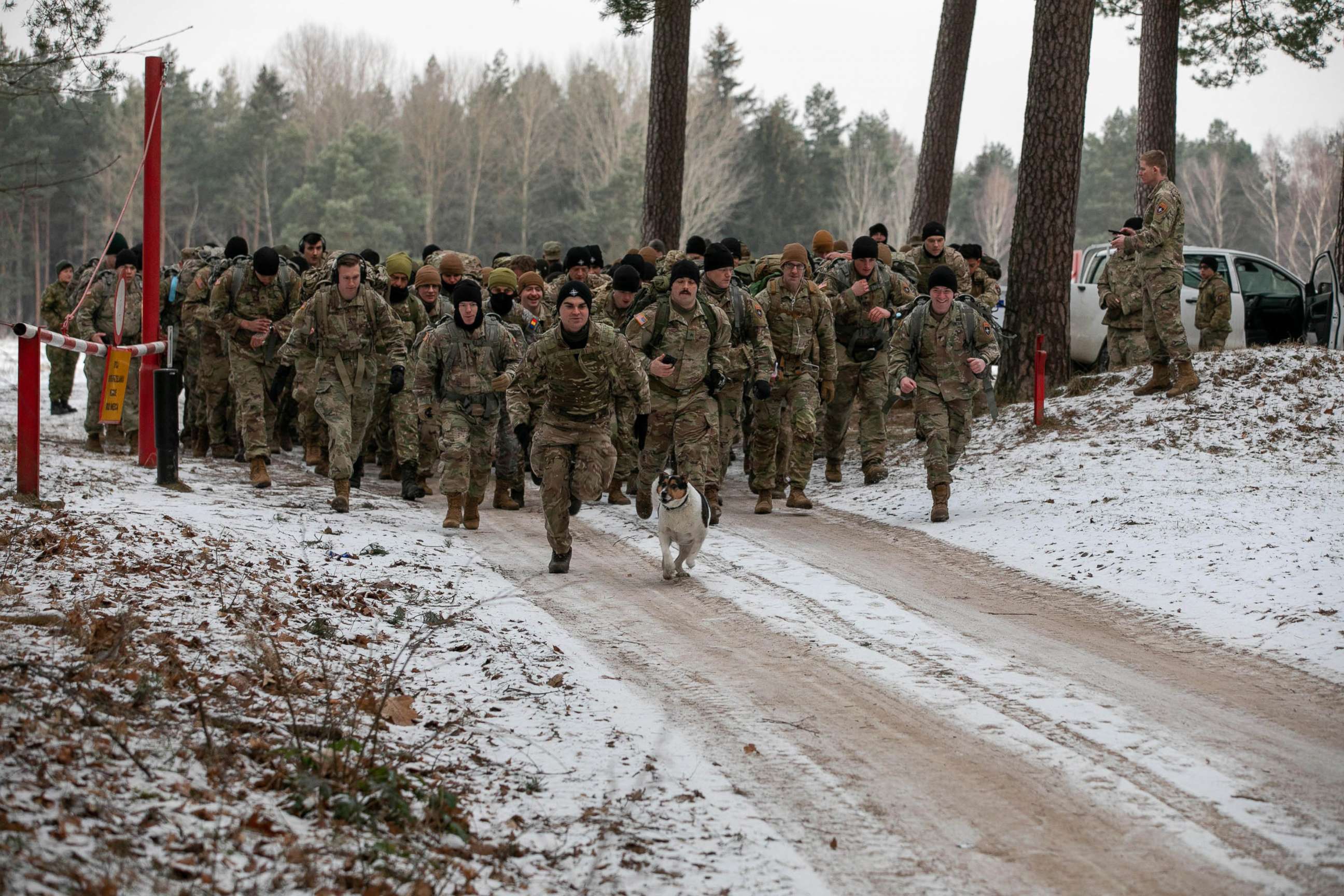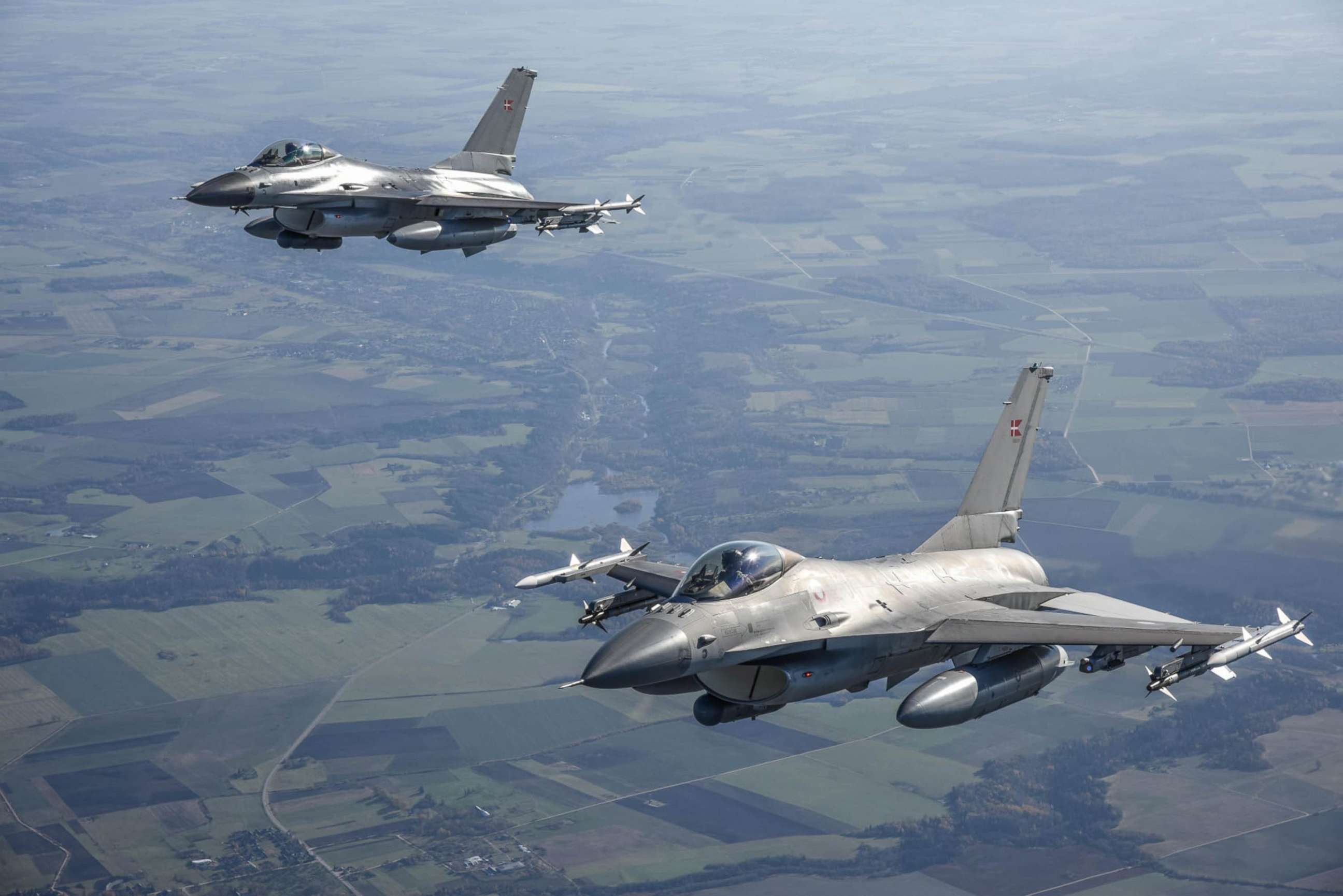US, NATO using military moves to send message to Russia over Ukraine
But how effective are they, given the small scale and some already planned?
Wednesday's arrival of American F-15 fighters in Estonia to join an ongoing NATO air policing mission over the Baltics would normally not garner much attention were it not for the rising tensions of a possible Russian invasion of Ukraine.
While the F-15's weeklong deployment to Estonia to join fighter jets from Belgium had been in the works for a while, Thursday's arrival in Lithuania of four Danish F-16 fighters for a similar mission was a more recent decision by Denmark tied to the rising tensions over Ukraine.
Though small in scope, Denmark's deployment of the additional aircraft and a ship to the Baltic Sea sends a message to Russia about the willingness by NATO countries to demonstrate their military capabilities and commitment to NATO partners during a crisis.

The deployments also highlight NATO's existing presence in eastern Europe and the Baltics, prompted by Russia's 2014 invasion of Crimea, and how any military movements are being viewed through the prism of the crisis with Ukraine, no matter the size of the deployment.
Since Ukraine is not a member of NATO, the alliance has no security commitment to Ukraine should Russia invade, but it is intent on assuring the security of neighboring NATO countries.
On Wednesday, NATO Secretary-General Jens Stoltenberg said that while diplomatic efforts continue to try to defuse the crisis with Russia "we are also prepared for the worst."
Stoltenberg also said this week's announcement by the Pentagon that 8,500 troops in the United States had been placed on heightened alert demonstrated "demonstrates the strength of the NATO alliance."
On Monday, the Pentagon announced that most of the troops had been placed on shortened "prepare to deploy orders" in case they were needed for the 40,000 man NATO Response Force was activated on short notice to respond to a crisis.
.

That same day Stoltenberg had detailed the movement of small numbers of ships, airplanes, and troops by Denmark and other NATO countries to eastern Europe and the Baltics.
Ironically, it was Russia's 2014 takeover of Crimea that prompted NATO and the U.S. to initially rotate more robust military forces into eastern Europe and the Baltics.
That includes Estonia, Latvia, Lithuania, and Poland where in recent years NATO has positioned four battlegroups consisting of 4,000 multinational troops, including American forces.
Separately Russia's annexation of Crimea led the United States to establish high-profile troop rotations in eastern Europe, currently there are 5,000 American forces carrying out training Poland.
Both the U.S. and NATO have been very public with any new or potential military call-ups or deployments to message to Russia that the alliance remains strong and has the capability of quickly reinforcing member nations that request assistance.
That messaging can include disclosing military planning and procedures that are not normally made public.
The Pentagon's top spokesman acknowledged on Tuesday that publicly announcing that 8,500 American military on heightened alert and on shorter "prepare to deploy orders" was not customary for the U.S. military.
"It's not typical that we talk about it as much as we've been talking about it," John Kirby told reporters.
Kirby also noted that the 8,500 troops on alert have not received orders to deploy and that the thousands of American troops already stationed in Europe were more likely to initially resource the NATO Response Force should it be activated.
The public messaging about military readiness is in line with the very public warnings to Russia by President Biden and American allies that a Russian invasion of Ukraine would have severe economic consequences for Russia.
"Although "strategic ambiguity" is an essential part of our international diplomacy, in this case, Russia needed to have a strong and unified message from the U.S. and NATO," said Mick Mulroy a former deputy assistant of defense and an ABC News national security contributor.
"The Pentagon has also been very forthcoming on all its activities," he said. "This is likely in an attempt to avoid any misinterpretation of their actions."
Mulroy that Russia should do the same particularly with more than 100,000 ground troops on Ukraine's borders.
"Without constant communication, this situation could lead to a conflict in which every nation involved, and even those that are not, is negatively impacted," he said.




